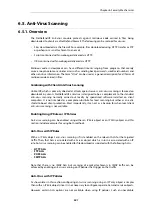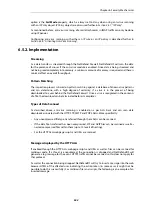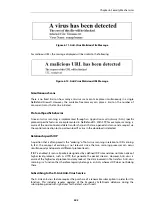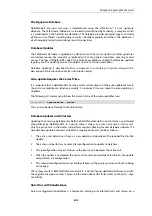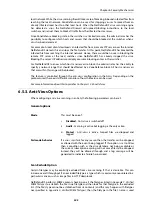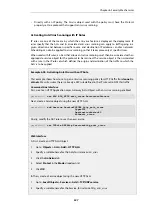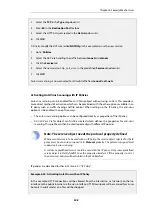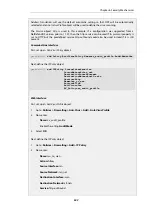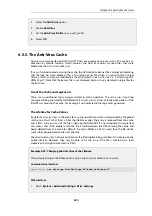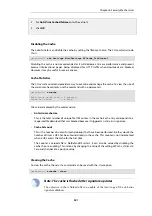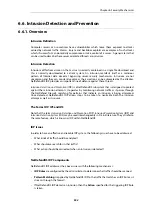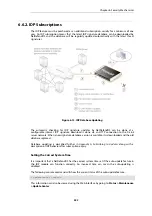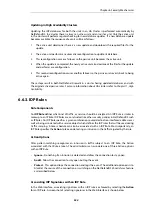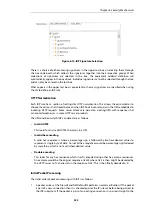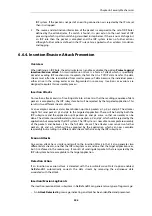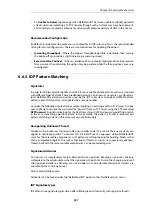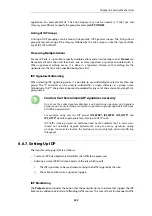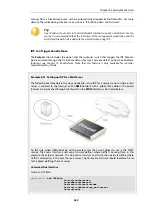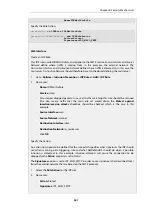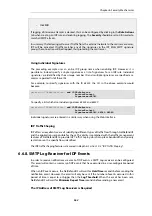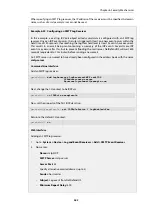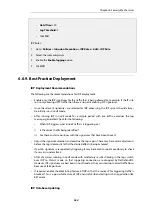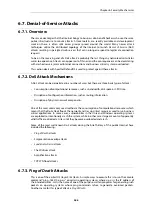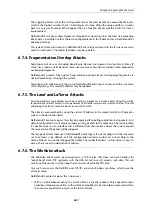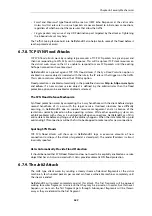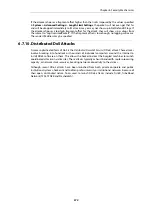
Figure 6.14. IDP Signature Selection
There is a choice of either entering signatures in the upper text box or selecting them through
the tree underneath which collects the signatures together into their respective groups. When
collections of signatures are selected in the tree, the equivalent wildcard definition will
automatically appear in the box above. Individual signatures cannot be selected through the tree
and can only be entered in the text box.
What appears in the upper text box is equivalent to the way signatures are specified when using
the CLI to define an IDP rule.
HTTP Normalization
Each IDP rule has a section of settings for
HTTP normalization
. This allows the administrator to
choose the actions that should be taken when IDP finds inconsistencies in the URIs embedded in
incoming HTTP requests. Some server attacks are based on creating URIs with sequences that
can exploit weaknesses in some HTTP server products.
The URI conditions which IDP can detect are as follows:
•
Invalid UTF8
This looks for any invalid UTF8 characters in a URI.
•
Invalid hex encoding
A valid hex sequence is where a percentage sign is followed by two hexadecimal values to
represent a single byte of data. An invalid hex sequence would be percentage sign followed
by something which is not a valid hexadecimal value.
•
Double encoding
This looks for any hex sequence which itself is encoded using other hex escape sequences.
An example would be the original sequence
%2526
where
%25
is then might be decoded by
the HTTP server to '
%
' and results in the sequence '
%26
'. This is then finally decoded to '
&
'.
Initial Packet Processing
The initial order of packet processing with IDP is as follows:
1.
A packet arrives at the firewall and NetDefendOS performs normal verification. If the packet
is part of a new connection then it is checked against the IP rule set before being passed to
the IDP subsystem. If the packet is part of an existing connection it is passed straight to the
Chapter 6: Security Mechanisms
555
Summary of Contents for NetDefendOS
Page 30: ...Figure 1 3 Packet Flow Schematic Part III Chapter 1 NetDefendOS Overview 30 ...
Page 32: ...Chapter 1 NetDefendOS Overview 32 ...
Page 144: ...Chapter 2 Management and Maintenance 144 ...
Page 284: ...Chapter 3 Fundamentals 284 ...
Page 392: ...Chapter 4 Routing 392 ...
Page 419: ... Host 2001 DB8 1 MAC 00 90 12 13 14 15 5 Click OK Chapter 5 DHCP Services 419 ...
Page 420: ...Chapter 5 DHCP Services 420 ...
Page 573: ...Chapter 6 Security Mechanisms 573 ...
Page 607: ...Chapter 7 Address Translation 607 ...
Page 666: ...Chapter 8 User Authentication 666 ...
Page 775: ...Chapter 9 VPN 775 ...
Page 819: ...Chapter 10 Traffic Management 819 ...
Page 842: ...Chapter 11 High Availability 842 ...
Page 866: ...Default Enabled Chapter 13 Advanced Settings 866 ...
Page 879: ...Chapter 13 Advanced Settings 879 ...

